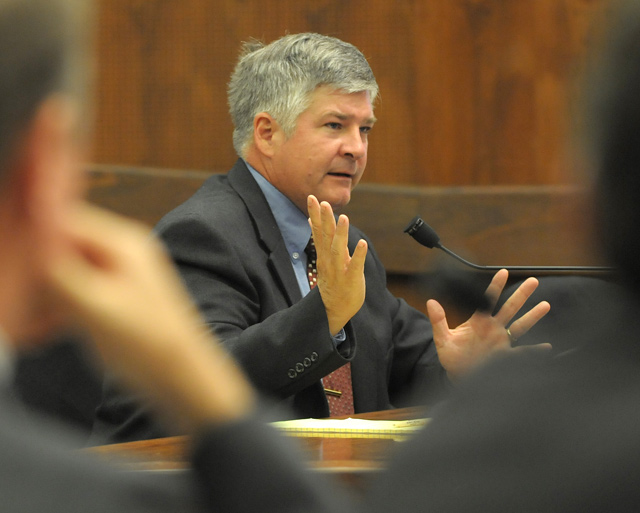City to Consider Ban on Lawn Watering
Desal Plant Delay Partly to Blame

With California’s drought in its fifth year and Lake Cachuma all but reduced to a proverbial “gob of spit,” the Santa Barbara City Council is finally about to consider whether or not to impose an outright ban on lawn watering. Lake Cachuma is nearly depleted, and the start-up date for the new and improved desal plant has been delayed. City water conservation planners estimate a lawn-watering ban could save 450-1,250 acre-feet a year. This Thursday the water commission will discuss how such a prohibition might be structured, and who would be exempt. Then, on Tuesday, the matter will go before the council, but for discussion only, not action.
Into this dismal situation came the news last week that the State Water Resources Control Board was ordering the Bureau of Reclamation and all water agencies drawing on Lake Cachuma to release five-fold more water into the Santa Ynez River in order to restore endangered steelhead trout populations to “good condition.” The new ruling is intended to affect steelhead during their spawning season — typically the first two months of the year — but it only applies in years with above-average rainfall. There will be less water to go around for sure, but by how much is uncertain.
According to Michael Buckman with the State Water Board, water agencies drawing on Lake Cachuma will have to release 225 acre-feet water more a year from the dam — on average — than they have since 2000. Such averages, however, mask the volatile complexity of the new approach. In 1967, which had plentiful rainfall, for example, the dam would have had to release nearly 8,000 acre-feet more water, according to Buckman’s estimates. Such required releases will reduce the dam operators’ ability to stockpile water in wet years to use in times of drought. Buckman thought that could generate shortages as high as 1,500 acre-feet a year or 3,881 over a three-year stretch.
This ruling, still in draft form, reflects the realization that all efforts to restore the steelhead have fallen woefully short. Despite considerable effort and expense, the largest number of adult steelhead counted on the Santa Ynez since 2000 has been just 16. That was in 2008. Before Lake Cachuma was built, the river teemed with 30,000 steelhead trout. According to the draft report, the dam is responsible for the 99 percent plunge in population by blocking the fish from reaching their prime spawning grounds above the lake. Existing federal regulations only require dam operators to “avoid jeopardy” for the remnant populations. According to the new order, however, they must restore the population to “good condition.” That’s a radical departure. Water agencies will now be required to conduct studies on how to get steelhead above the dam. Previous studies on the same question have concluded such efforts are not feasible. In addition, water agencies will be required to explore ways to eliminate nonnative fish species that have preyed upon steelhead and their spawn.
The draft order, expected to be adopted by the State Water Board later this year, will increase steelhead rearing and spawning habitats. This will be an almost total vindication for the conservation group CalTrout, represented by Santa Barbara’s Environmental Defense Center, which began focusing on steelhead depletion in the Santa Ynez River in 1987.
For Tom Fayram, head of the county’s Water Agency, the directive serves to reinforce what most players already understood: that the amount water agencies can expect to take out of Lake Cachuma needs to go down. The traditional 25,700 acre-feet safe yield, he said, is clearly a pipe dream. Probably a safer number is below 20,000. And with the new ruling, it will be even less. “Is it 1,000 acre-feet less? Five thousand? Ten thousand?” he asked. “We don’t know yet. “
Into this reality, the Santa Barbara City Council will begin considering whether residents can continue to water their lawns.



